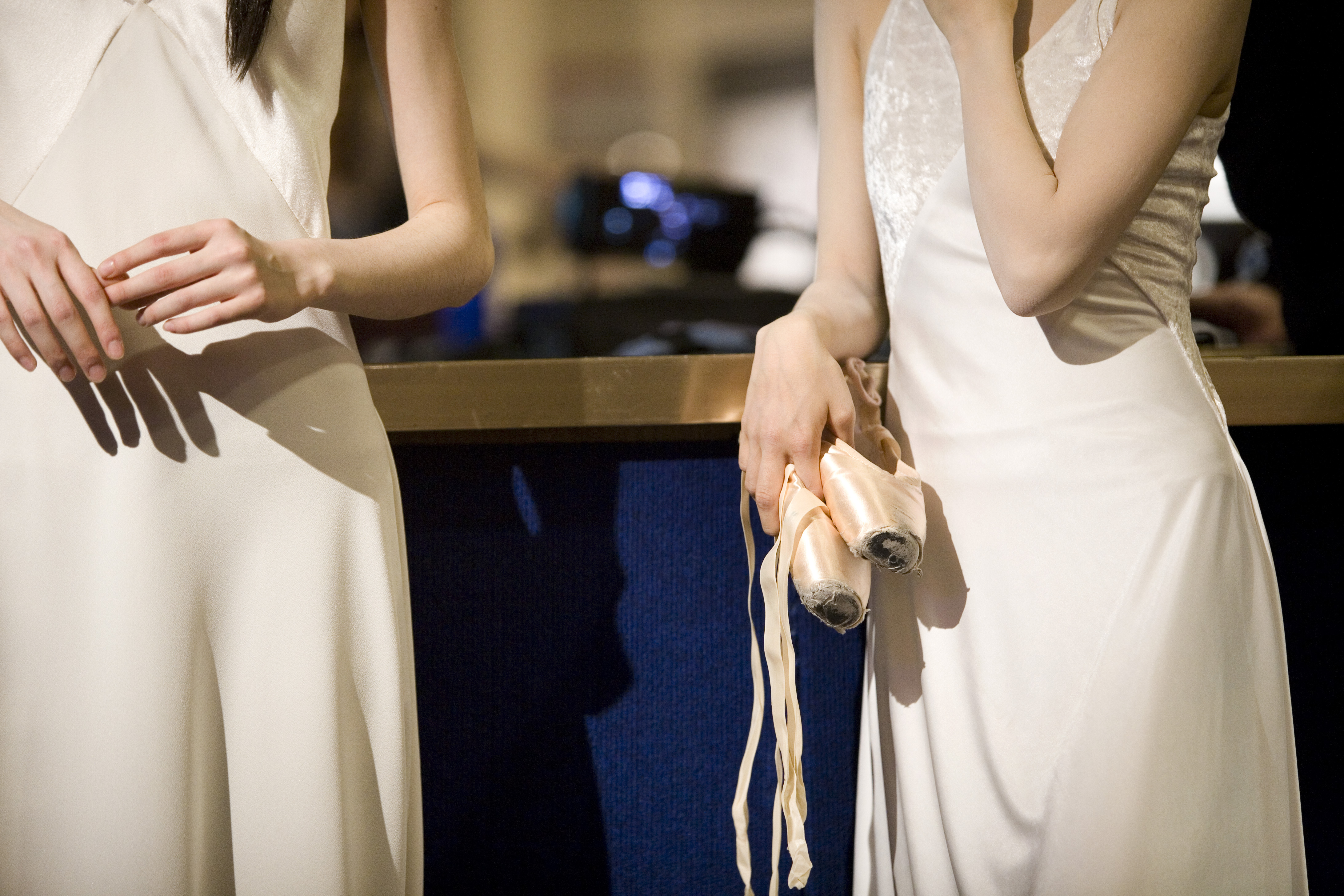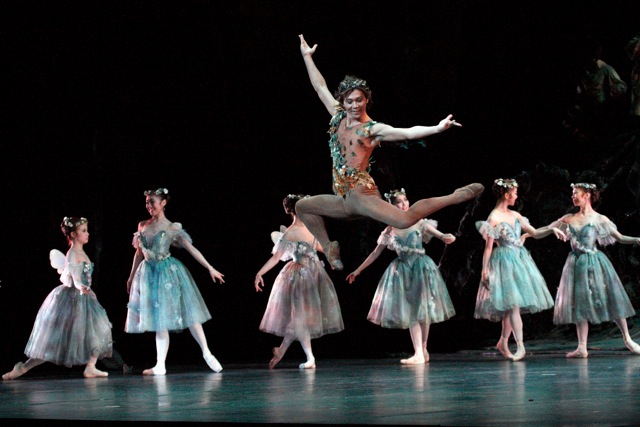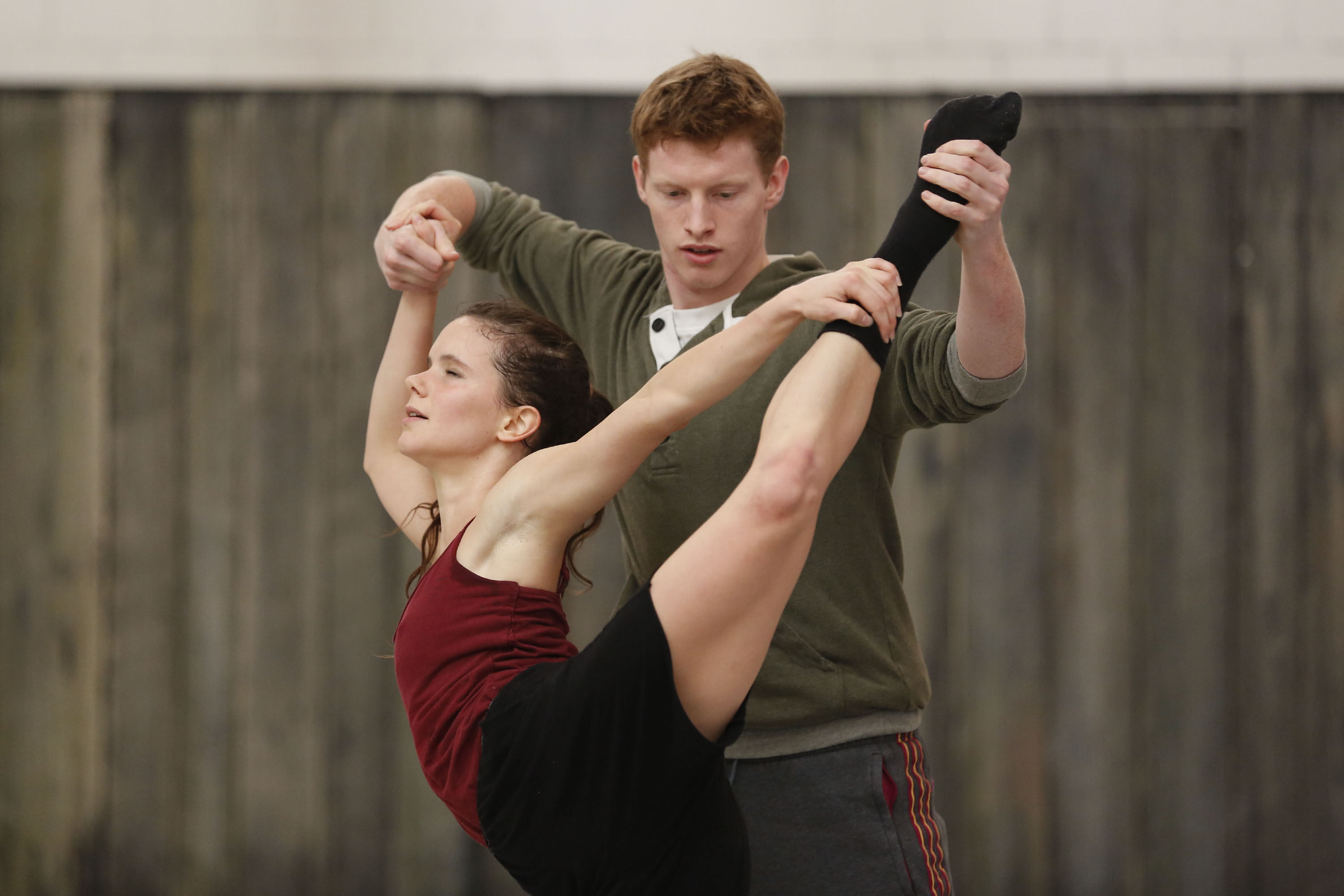Ballet competition given mixed marks

The Prix de Lausanne is an annual international ballet competition which aims to discover and promote the potential of young dancers. However, not everyone agrees on the competition’s value.
Ahead of this year’s finals on February 2, when eight of 20 candidates will leave with a scholarship, swissinfo.ch spoke – separately – to both a defender and a critic of the prestigious event.
Another way of looking at the debate is to divide the two camps into Old School and Modern. Representing the former is Jean Pierre Pastori, a Swiss dance critic and ballet historian; in the other corner is Guilherme Botelho, a Brazilian-born choreographer who moved to Geneva as a teenager.
Botelho, 50, doesn’t waste any time in describing the Prix de Lausanne as “dated”.
“It appears to have forgotten the importance of contemporary dance. The tests which the dancers have to take are oriented towards classical ballet – heavy on pirouettes, entrechats [jumps during which the dancer crosses his/her legs several times] and portés [moving in the air/being carried from one place to another],” he said.
“It leaves little room for the creativity of the interpreter, unlike in contemporary dance, where the dancer can move a lot more freely. This is more in tune with the times, which have moved towards a personalised art form, capable of triggering an emotion.”
Botelho, who tours the world with his dance company Alias, maintains that a training in contemporary dance is an important part of European cultural policies.
“In France, for example, the majority of contemporary dance centres are dedicated to this discipline. In French-speaking Switzerland, for two years there’s been a federal proficiency certificate in contemporary dance. Proof that you can’t choose to overlook this form of artistic expression.”

More
Ballet star on life as a maturing virtuoso
Not a charity
Pastori, 63, sees things differently. “The Prix de Lausanne’s evaluation programme does include a contemporary dance test. The problem is that many young choreographers don’t recognise it as such. They see it as a neoclassical discipline. But let’s stop this petty squabbling!”
For him, the usefulness of the prize lies elsewhere: in the desire to offer talented young dancers an education in a famous school such as the Opéra de Paris or the Royal Ballet School in London which they couldn’t afford on their own.
“Those who don’t need additional training will receive a scholarship for a one-year internship at a renowned international company. If a place then opens up within the company, the dancer can be engaged there as a member.”
This certainly looks good on a CV. However, Pastori denies that the Prix de Lausanne is ultimately a recruitment agency. “Its aim is above all to promote excellence.”
For his part, Botelho compares the Prix du Lausanne to a philanthropic organisation intended to provide financial support for talent-rich but cash-poor artists.
Pastori stresses, however, that “charity is not on the menu”.
“You can’t compare what happens here with the other competitions held in Tokyo, New York or Moscow where candidates get a gold or silver medal,” he said.
“Lausanne is not a place of athletic performance with a small fortune as a reward. I repeat: the winner here is the person with the greatest development potential.”

More
Paralysed dancer now back on stage in Bern
Europe vs the rest
But is this potential lacking in European candidates, whose numbers continue to dwindle in the face of competition from Asia or Latin America, with Brazilians at the fore?
Pastori believes it’s not potential that’s lacking in Europe but motivation.
“Youngsters who live in rich countries have 1,001 distractions. This makes it hard to concentrate on a demanding discipline such as dance, which requires a fighting spirit,” he said.
“Young Asians on the other hand are fighters – without doubt as a result of living conditions which are harsher than ours. Add to that the fact that in China and Japan there are significantly fewer dance schools and companies than in Europe.”
It’s therefore not surprising, he adds, that young dancers from those countries try their luck here.
“A French dancer, for example, is spoilt for choice: Marseille, Lyons and Paris have excellent training centres.”
Botelho says the presence of Brazilian candidates in the Prix de Lausanne is in step with the economic boom in Brazil.
“I left my country about 30 years ago. But I often visit on tour and see the giant step forward that has been made on an artistic level. Dance, for example, today benefits from state support, whereas previously it didn’t receive any sort of financial aid.”
The Prix de Lausanne is open to young dancers of all nationalities aged 15 to 18 who are not yet professionals. Its mission is:
To reveal the potential of exceptionally talented young dancers (ages 15 to 18) from around the globe by having them perform before a jury of world-renowned dance personalities.
To open the doors to the world’s most prestigious international schools and companies by providing top finishers with scholarships.
To promote their scholastic education (a dancer’s career is short-lived: from about age 18 to 38) by ensuring that they earn a high school diploma which will facilitate their career transition.
To preserve their health by applying a strict health policy: eating habits and body mass index are scrutinised before the competition.
(Source: Prix de Lausanne)
(Translated from French by Thomas Stephens)

In compliance with the JTI standards
More: SWI swissinfo.ch certified by the Journalism Trust Initiative
You can find an overview of ongoing debates with our journalists here. Please join us!
If you want to start a conversation about a topic raised in this article or want to report factual errors, email us at english@swissinfo.ch.